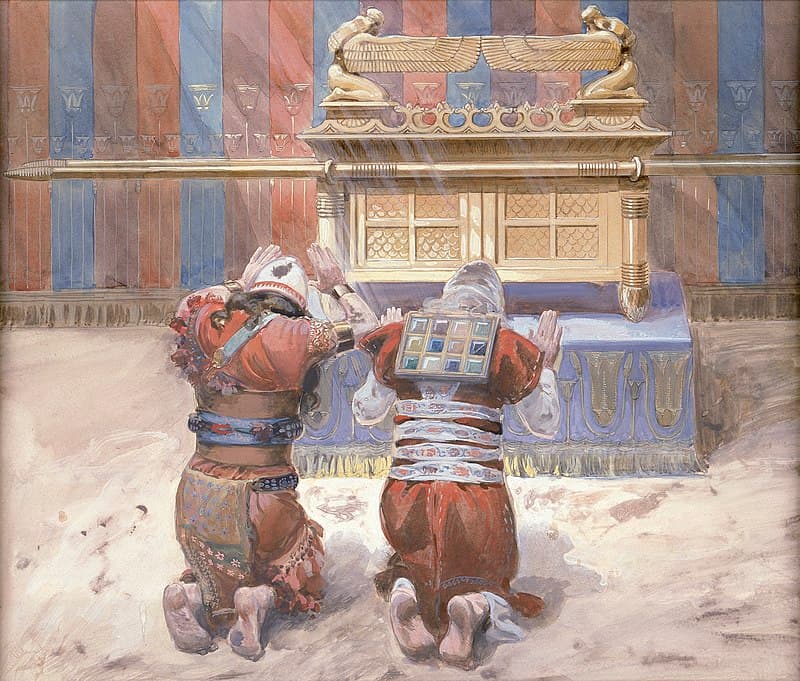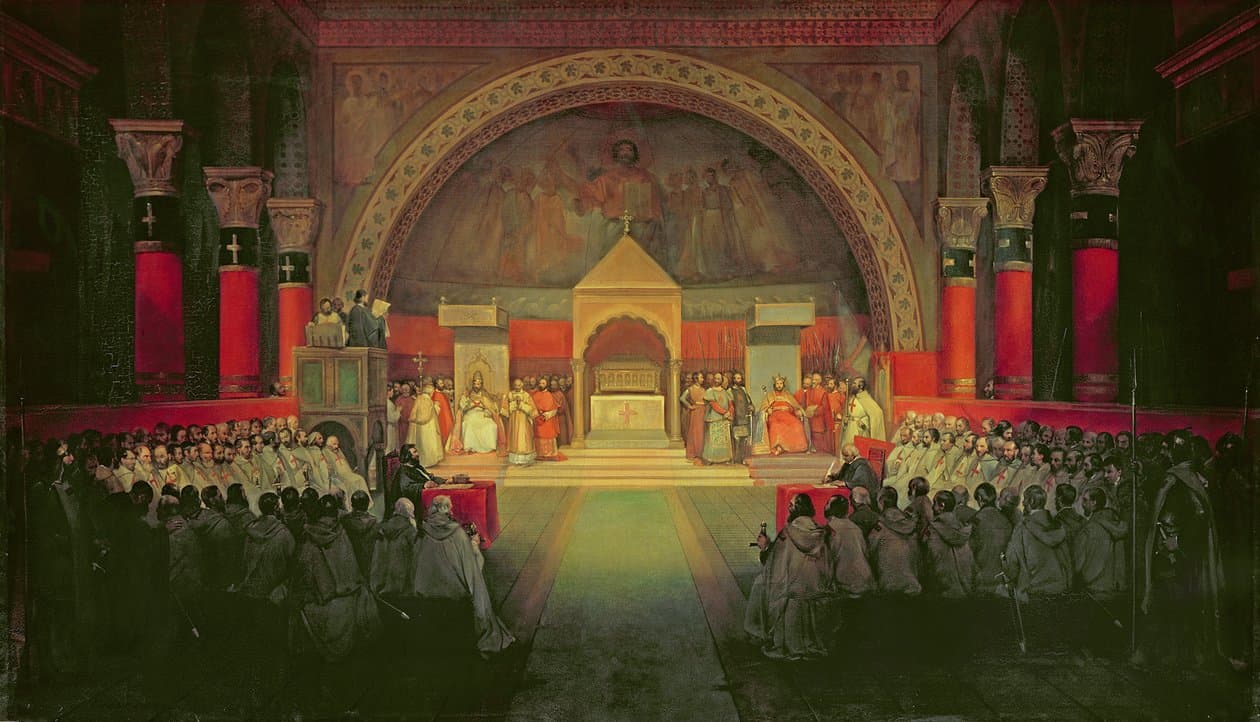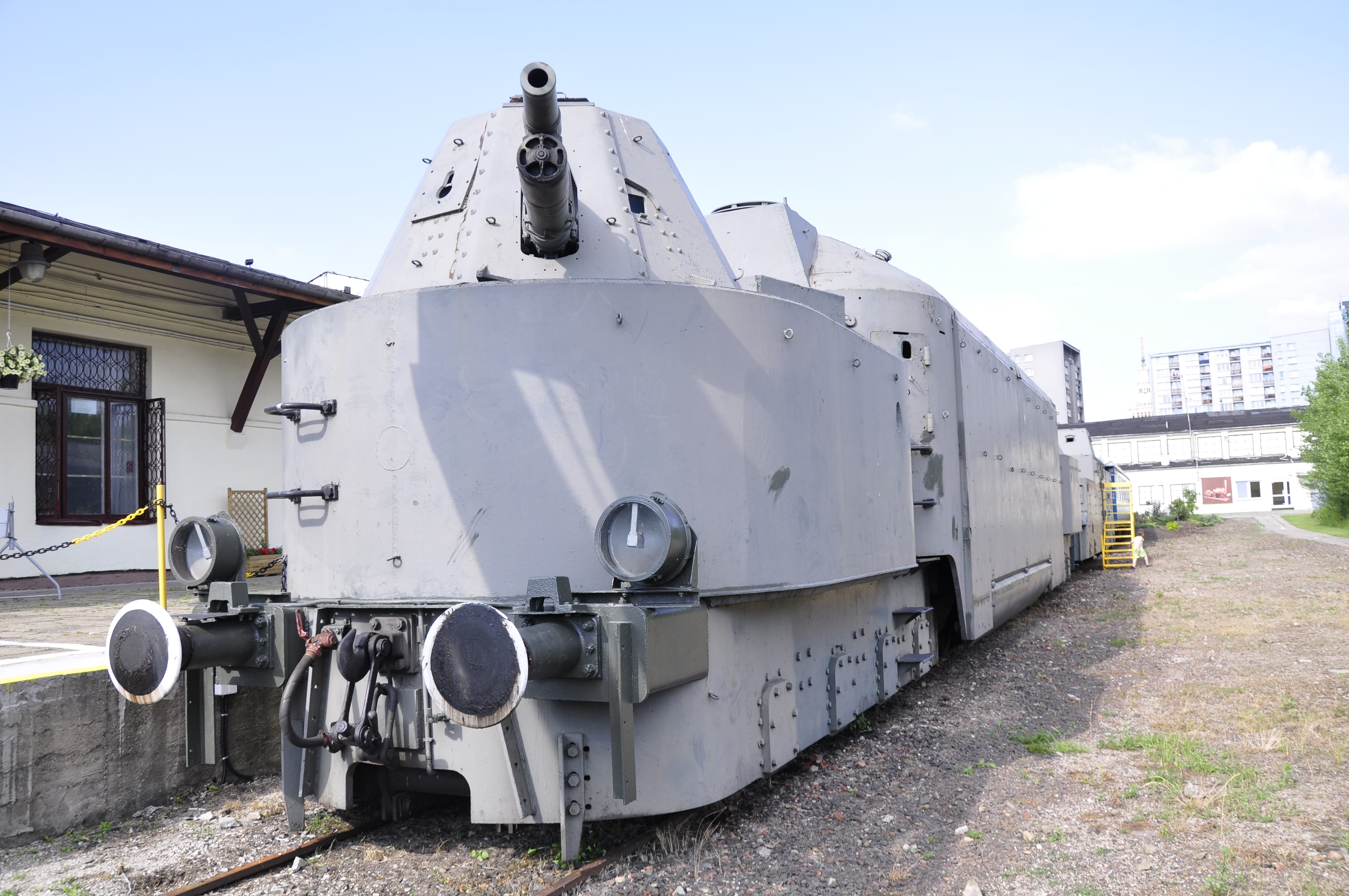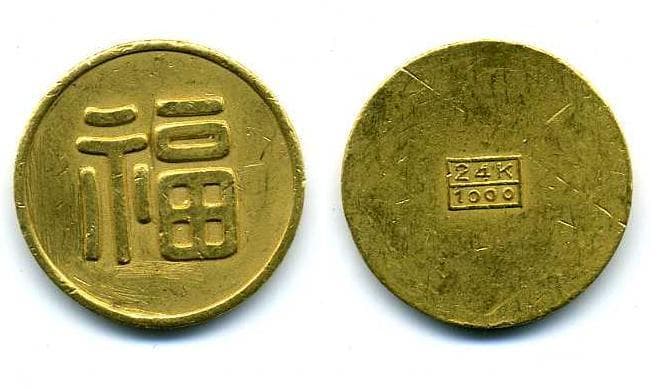Top 5 Lost Treasures That Might Still Be Out There
Throughout history, people have told stories about amazing treasures that disappeared. Some were lost in disasters, others were stolen or hidden and never found again. From the ancient Ark of the Covenant of biblical times to gold rumored to be buried in Southeast Asian caves during World War II, these five legendary treasures still fascinate treasure hunters and historians today. Read on to explore the mysteries behind some of the world's most famous lost treasures.
Ark of the Covenant (Biblical Era)
Image: Moses and Joshua in the Tabernacle (c. 1900) by James Tissot, depicting them bowing before the Ark of the Covenant.In biblical tradition, the Ark of the Covenant was a sacred gold-covered chest that held the stone tablets of the Ten Commandments. It sat in the Temple of Solomon in Jerusalem until the city's fall. When Nebuchadnezzar II of Babylon destroyed the First Temple (586 BCE), the Ark disappeared and its fate is unknown. Ancient sources note that the Babylonians took many temple treasures but make no mention of the Ark itself, suggesting it was hidden or removed before the invasion. Over centuries, legends arose: one account has King Josiah hiding the Ark beneath the Temple mount, another says Solomon foresaw the fall and hid it in a desert cave. Ethiopian Christians even claim the real Ark resides today in a church in Axum, guarded by a designated “Keeper of the Ark”. To this day, the disappearance of the Ark remains one of history's greatest mysteries.
Treasure of the Llanganates (Ecuador, 1533)
Image: Inca gold artifacts on display (Metropolitan Museum, New York).In 1532, Spanish conquistador Francisco Pizarro captured the Inca emperor Atahualpa and demanded a ransom of gold and silver. Atahualpa promised to fill a large room with precious metals, and his people gathered enormous wealth to pay. Legend says that before the ransom collection could be delivered, Atahualpa was executed by the Spaniards. Hearing this, the Inca general Rumiñahui, who was carrying the vast haul, is said to have buried or hidden it deep in the remote Llanganates mountains of Ecuador. The “Treasure of the Llanganates” is described as a hoard of gold, silver, platinum and electrum artifacts on an enormous scale. Modern searches by explorers (armed with clues from old chronicles) have turned up lost cities and sites, but no definitive gold cache. Rumiñahui died without revealing its location, and it remains unclear whether the treasure was hidden in a cave, dropped into a lake, or otherwise lost to time. The mystery of the Inca ransom treasure, sometimes linked to tales of “El Dorado”, persists as a legendary prize awaiting discovery.
Lost Treasure of the Knights Templar (Medieval Europe, 1307)
Image: Painting of a Knights Templar chapter meeting (Chapel of the Temple, Paris, 1842).The Knights Templar were a wealthy crusading order in the Middle Ages. Over two centuries they amassed lands, vassals and accumulated spoils from the Holy Land. In 1307 King Philip IV of France, heavily in debt, abruptly arrested the Templars on charges of heresy and seized their bank. This sudden downfall spawned rumors that many knights escaped with secret treasure. According to various legends, the Templars hid great wealth before their arrest, perhaps a fortune in gold, gems and holy relics, which then vanished. Stories of the hidden Templar hoard have persisted in popular culture (for example, linking to the mystery of Rennes-le-Château in France or even suggesting artifacts are buried in the Temple Mount). While historians note that most Templar assets were confiscated by royal and papal decree, the idea of a “lost Templar treasure” has become a powerful myth. To this day, treasure hunters and storytellers speculate about caches of the Templar gold, but no credible finds have ever been confirmed.
Nazi Gold Train (Poland, 1945)
Image: Panzertriebwagen 16, a German armored railcar photographed at the Warsaw Railway Museum. This type of heavily fortified train was used by the Wehrmacht during WWII and resembles the kind of armored transport linked to the Nazi Gold Train legend.In the final days of World War II, retreating Nazi forces are said to have loaded an armored train with gold bars, jewels, artworks and secret documents in Breslau (now Wrocław) and spirited it away to tunnels beneath Wałbrzych's Project Riese. In 2015 two treasure hunters claimed to have located the train by ground-penetrating radar, prompting excavations by Polish authorities and private teams—only to turn up natural geological anomalies. A deathbed confession to Polish officials also fueled searches that uncovered no trace of tracks or treasure cars. Although most experts now consider the legend a myth, the Nazi Gold Train continues to inspire stories, documentaries and amateur hunts for what would be one of history's greatest lost hoards.
Yamashita's Gold (Philippines, 1945)
Image: Marufuku gold coin issued by the Japanese Imperial government during World War II (1943-1944).During World War II, Japanese forces under General Tomoyuki Yamashita looted immense wealth from occupied Southeast Asia. The legend of “Yamashita's Gold” holds that, as Allied forces closed in, the Japanese hid convoys of gold bars, gems and jewels in caves and tunnels across the Philippines. Over the last 70+ years, independent treasure hunters and even armies have scoured islands like Luzon, Mindanao and Samar, following leads of hidden caches. Despite decades of searching (and some sensational claims), none of these treasure troves have materialized. Contemporary research suggests that most evidence for Yamashita's Gold is anecdotal or hearsay, and experts consider the huge treasure a wartime myth. Still, the idea that there may be buried World War II treasure in jungle caves keeps the quest alive, making it a modern mystery matching those of legend.




